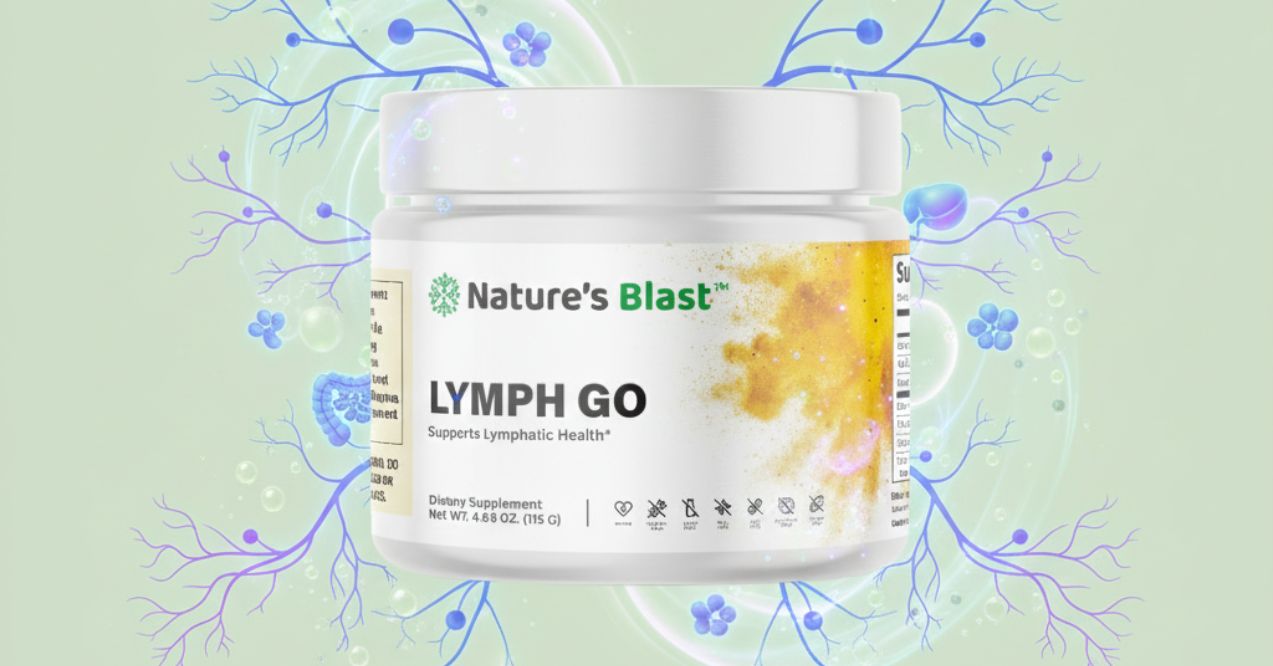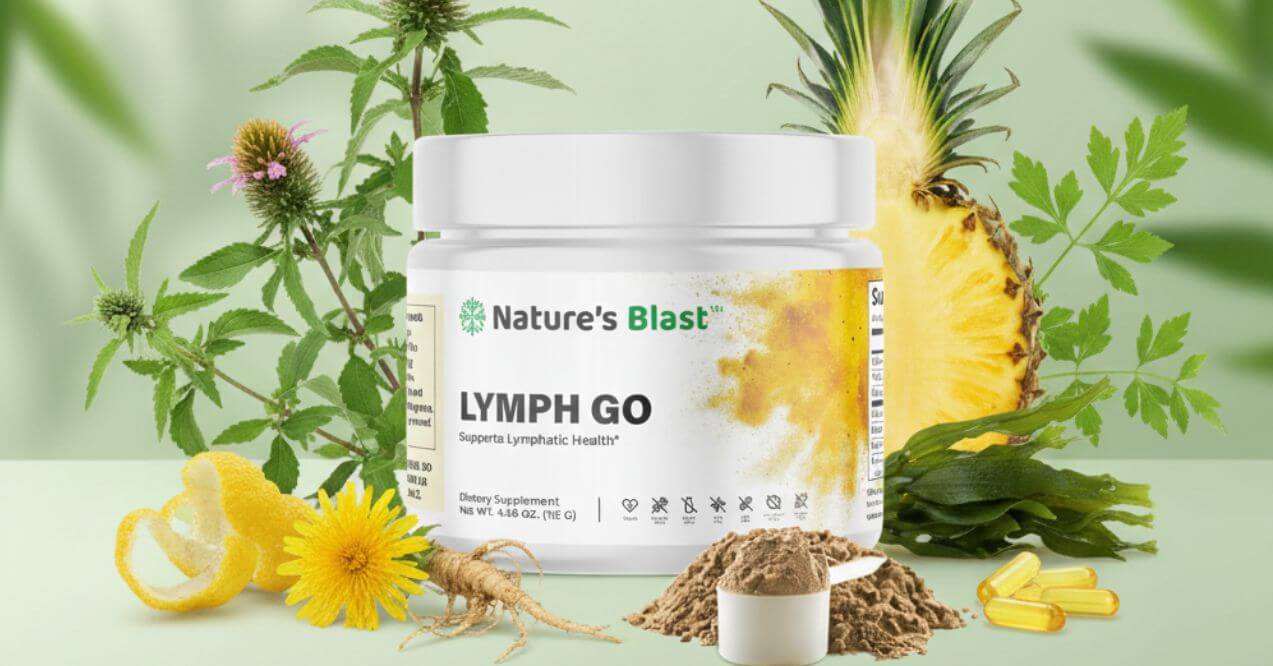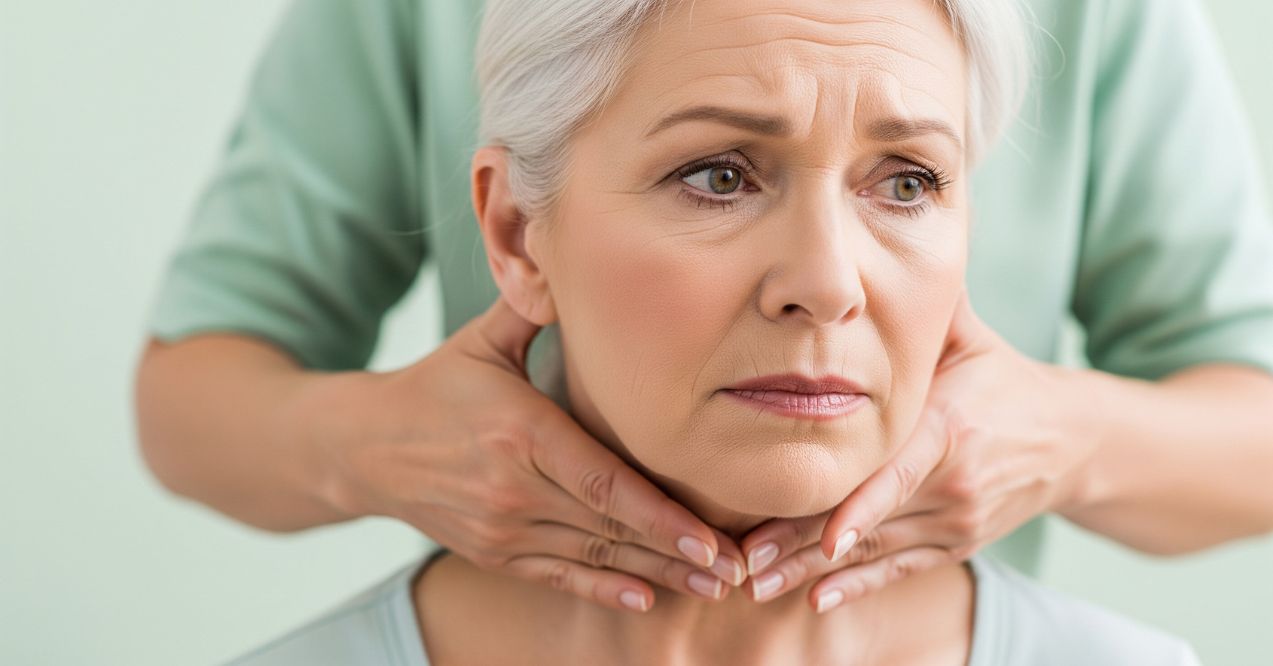Should I Go to Urgent Care for Swollen Lymph Nodes?
Medically reviewed by our experts


You feel a bump under your jaw or in your neck. It’s tender and concerning. The question “should I go to urgent care for swollen lymph nodes” crosses your mind immediately.
Swollen nodes often signal your body is responding to something. This response can range from minor irritation to something needing attention. The discomfort and uncertainty can create anxiety about the next step.
Most swollen nodes resolve without intervention. However, certain features suggest a need for professional evaluation. This article helps you make an informed decision about seeking care.
How Lymph Nodes Work & Why They Swell
Lymph nodes are small structures throughout your body. They act as filtering stations for your immune system. These nodes trap foreign agents before they spread further.
The lymphatic system moves fluid through your tissues. This fluid carries immune cells to where they’re needed. When nodes detect something unusual, they activate immune cells.
The lymphatic system moves fluid through your tissues. This fluid carries immune cells to where they’re needed. When nodes detect something unusual, they activate immune cells — which is also why swelling near lymph nodes behind knee or in other regions can occur after localized irritation or minor infection.
Activation causes nodes to enlarge temporarily. This enlargement is called lymphadenopathy by medical professionals. The swelling shows your immune system is responding actively.
| Feature | Normal Node | Swollen Node |
| Size | Pea-sized or smaller | Grape-sized or larger |
| Texture | Soft, mobile | May be firm |
| Tenderness | Usually none | Often present |
| Location | Not easily felt | Noticeable to touch |
Swelling alone doesn’t mean danger. It indicates your body is working to address a challenge. Most cases resolve as the immune response completes its work.
Common Triggers of Swelling
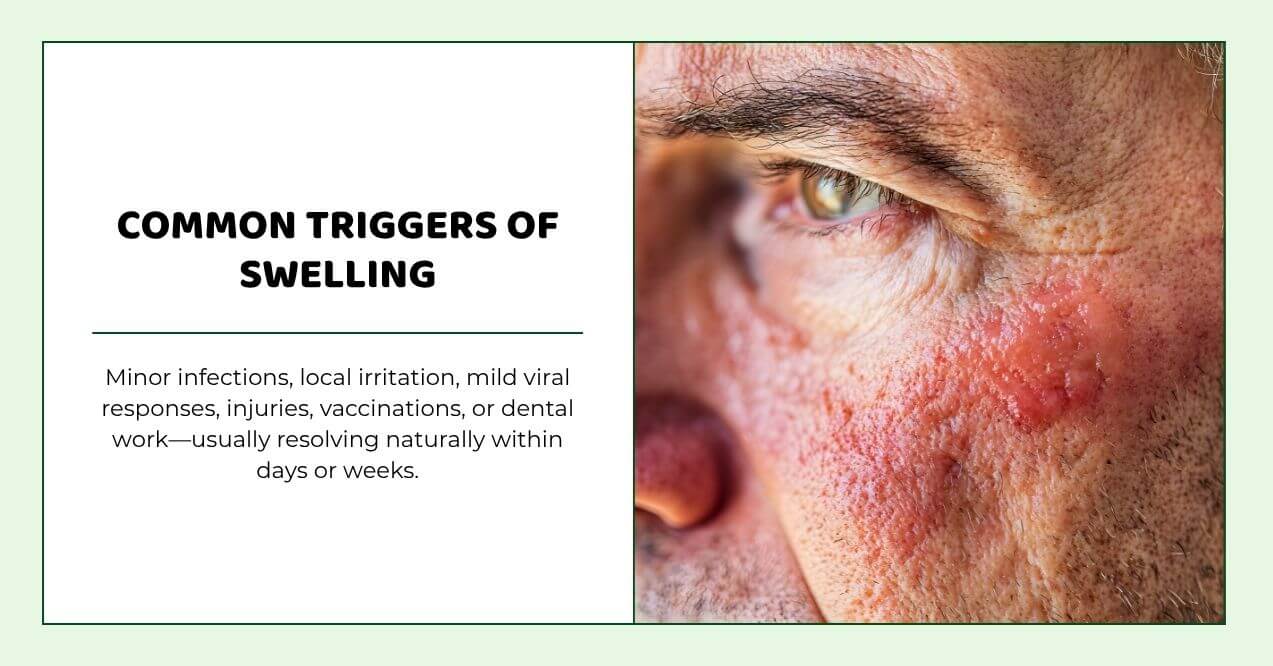
Several factors may cause nodes to enlarge. Local irritation near a node often triggers swelling. The body sends immune cells to investigate the area.
Minor infections frequently activate nearby nodes. Your immune system responds to microbial activity in surrounding tissues. This response is a natural protective mechanism.
Common triggers
- Local microbial activity from nearby minor infection or irritation
- Immune system activation after mild viral challenge
- Trauma or skin injury near a node cluster
- Recent vaccination in the arm (nodes in armpit)
- Dental work or mouth irritation (nodes under jaw)
Most of these situations resolve naturally. The nodes typically return to normal size within days or weeks. Your body handles the situation without outside help in many cases.
Risks to Watch / Red Flags
Certain features suggest something needs attention. Persistent enlargement beyond two to three weeks raises concern. Rapid growth or increasing size also signals a problem.
If you’ve ever found yourself wondering should I go to urgent care for swollen lymph nodes, pay attention to the details—hard consistency or a fixed position may indicate something more complex. Multiple non-adjacent regions swelling simultaneously needs evaluation.
Systemic symptoms add urgency to the situation. These include unexplained fever that won’t break, night sweats that soak your clothes, or unintended weight changes over a short period. In some cases, swelling may even be related to fluid imbalance — something people also question when asking why is only my left leg swelling.
Key Warning Indicators
Watch for these specific signs that suggest urgent evaluation:
- Persistent enlargement lasting more than 2-3 weeks without improvement
- Firm or fixed nodes that don’t move under the skin
- Nodes located near collarbone or lower neck regions
- Associated systemic changes like ongoing fever or weight loss
- Rapid size increase over days rather than weeks
- Hard texture rather than soft or rubbery feel
Any red flag warrants a prompt medical visit. Don’t wait for multiple warning signs to appear. One concerning feature is enough to justify professional assessment.
Should I Really Go to Urgent Care for Swollen Lymph Nodes?
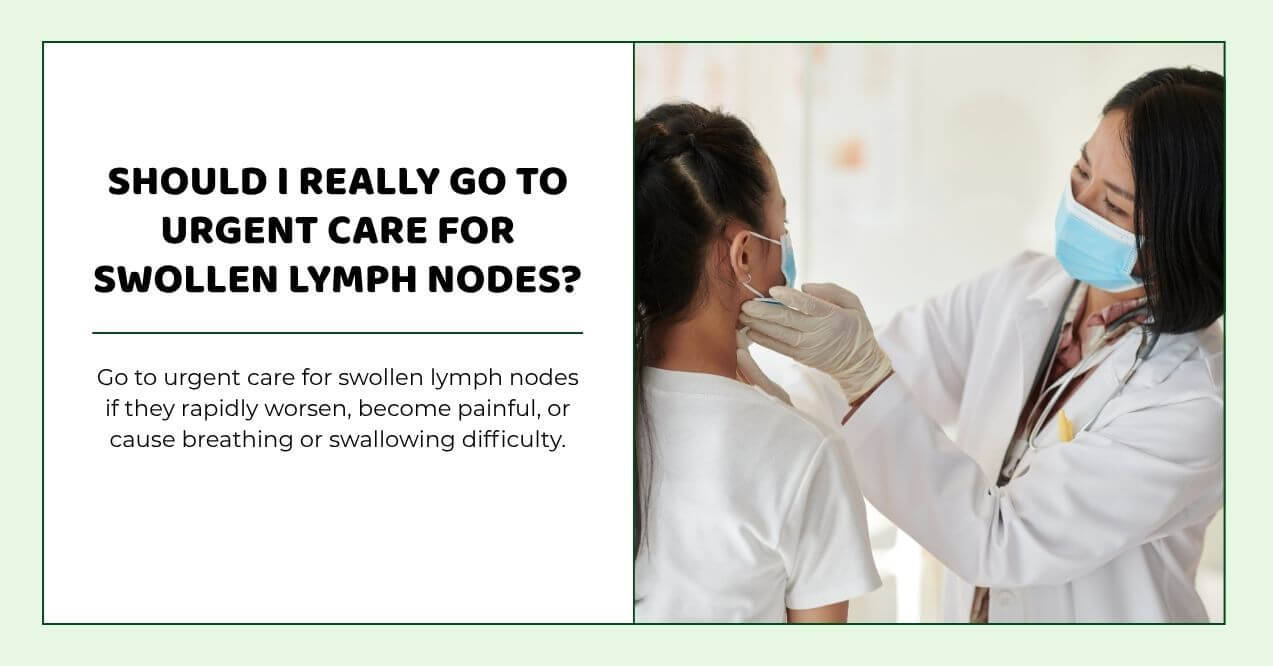
The decision depends on specific features you’re experiencing. Should I go to urgent care for swollen lymph nodes that appeared yesterday? Probably not if you have cold symptoms too.
Wait-and-watch works for mild cases with clear causes. New swelling with obvious infection may resolve on its own. However, certain situations need faster action than a regular appointment.
Go to urgent care if you experience rapid worsening. Sudden pain or dramatic size increases matter. Functional symptoms demand immediate attention too.
These include difficulty swallowing or breathing properly. Spreading redness around the node suggests infection. Warmth and severe tenderness indicate active inflammation that may need intervention.
Your decision checklist includes several factors. How long has the swelling been present? Is there an obvious cause that’s resolving? Are you experiencing systemic symptoms? Can you perform normal activities comfortably?
What Happens at an Urgent Care Visit
- The visit begins with intake about your symptoms. Staff will ask when you noticed the swelling.
- A provider examines the affected nodes carefully. They’ll feel for size, texture, and mobility.
- Basic evaluation may include point-of-care testing. Some facilities offer rapid tests for common infections. Blood work might help assess your immune response.
- The provider determines if you need imaging. Ultrasound can show internal node characteristics.
- You may receive a referral to a specialist. Urgent care identifies who needs additional follow-up. They help bridge the gap between concern and appropriate care.
Role of Supplements & Supporting Measures
Certain nutrients may help maintain lymphatic function. Your body needs building blocks for immune cells. These cells populate and work within lymph nodes.
Research suggests that Vitamins C and E contribute to immune activity. Zinc plays a role in immune cell development. These nutrients work as part of overall wellness routines.
For those interested in targeted nutritional approaches, specialized formulations exist. A range of lymphatic drainage supplements focuses on this body system specifically. These formulations typically combine vitamins, minerals, and botanical extracts.
One specific option is Lymph Go, a comprehensive formula designed for lymphatic wellness. This supplement combines natural ingredients list that may assist with healthy drainage. It includes botanical extracts and nutrients selected for their potential effects.
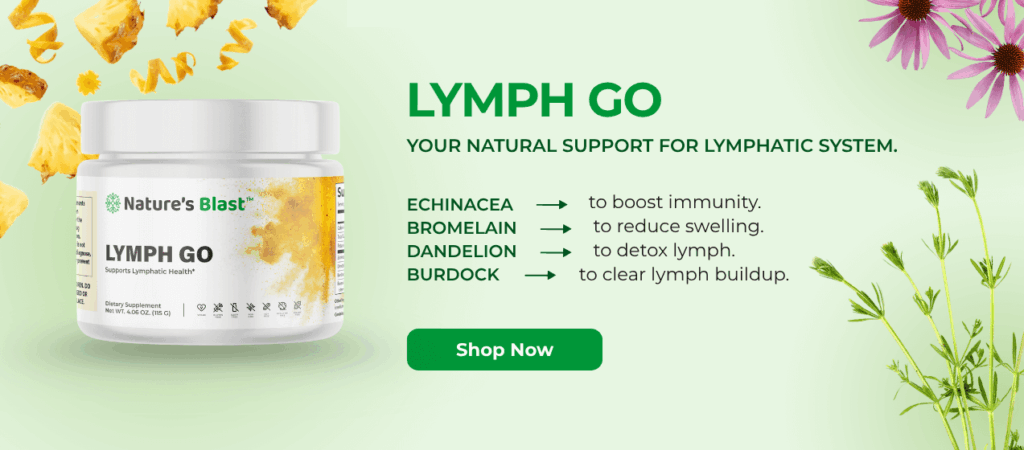
The formula addresses multiple aspects of lymphatic function simultaneously. It provides minerals involved in fluid regulation. The blend offers compounds that may work with your body’s drainage systems.
These supplements serve as adjunct measures only. They don’t replace professional evaluation when needed. Think of them as ongoing nutritional strategies for wellness maintenance.
What You Can Do at Home (Non-urgent)
Several self-care measures may help with mild discomfort.
- A warm compress applied gently can feel soothing. Heat potentially promotes circulation to the area.
- Rest allows your body to focus on immune responses. Adequate hydration helps lymphatic fluid move through tissues. Avoid tight clothing that puts pressure on swollen areas.
- Gentle massage away from the node may feel comfortable. Move your fingers in circular motions on surrounding tissue. Stop immediately if this causes pain or increases swelling.
- Monitor the situation closely over several days. Note any changes in size or symptoms. Keep track of what makes it feel better or worse.
- Stop home care and seek evaluation if things worsen. New symptoms appearing suggest the need for assessment. Trust your instincts about when something feels wrong.
Conclusion
Swollen lymph nodes create natural concern and uncertainty. Many cases involve minor triggers that resolve naturally. Your body’s immune response often handles the situation effectively.
Red flags and warning signs indicate when evaluation matters. Persistence, rapid changes, or systemic symptoms need attention. Urgent care provides accessible assessment when you need it.
The decision to seek care balances several factors. Consider duration, severity, and accompanying symptoms. Should I go to urgent care for swollen lymph nodes becomes clearer with this information.
Trust your judgment about your own body. When doubt exists, professional evaluation brings peace of mind. Follow up with your regular provider for ongoing concerns.
Wait two to three weeks if the node isn’t growing rapidly. Watch for improvement during this time. Go sooner if pain worsens, size increases dramatically, or systemic symptoms develop. Seek immediate care if breathing or swallowing becomes difficult at any point.
Serious nodes are often painless, hard, and fixed in place. They persist beyond three weeks without improvement. Multiple non-adjacent areas swelling simultaneously raises concern. Accompanying fever, night sweats, or weight loss suggests a need for prompt evaluation.
Gentle examination typically doesn’t cause swelling. However, aggressive or repeated pressing may irritate tissues. This irritation could cause temporary mild inflammation. Check nodes gently once daily at most. Avoid excessive manipulation that might complicate your assessment.
FAQ
References
